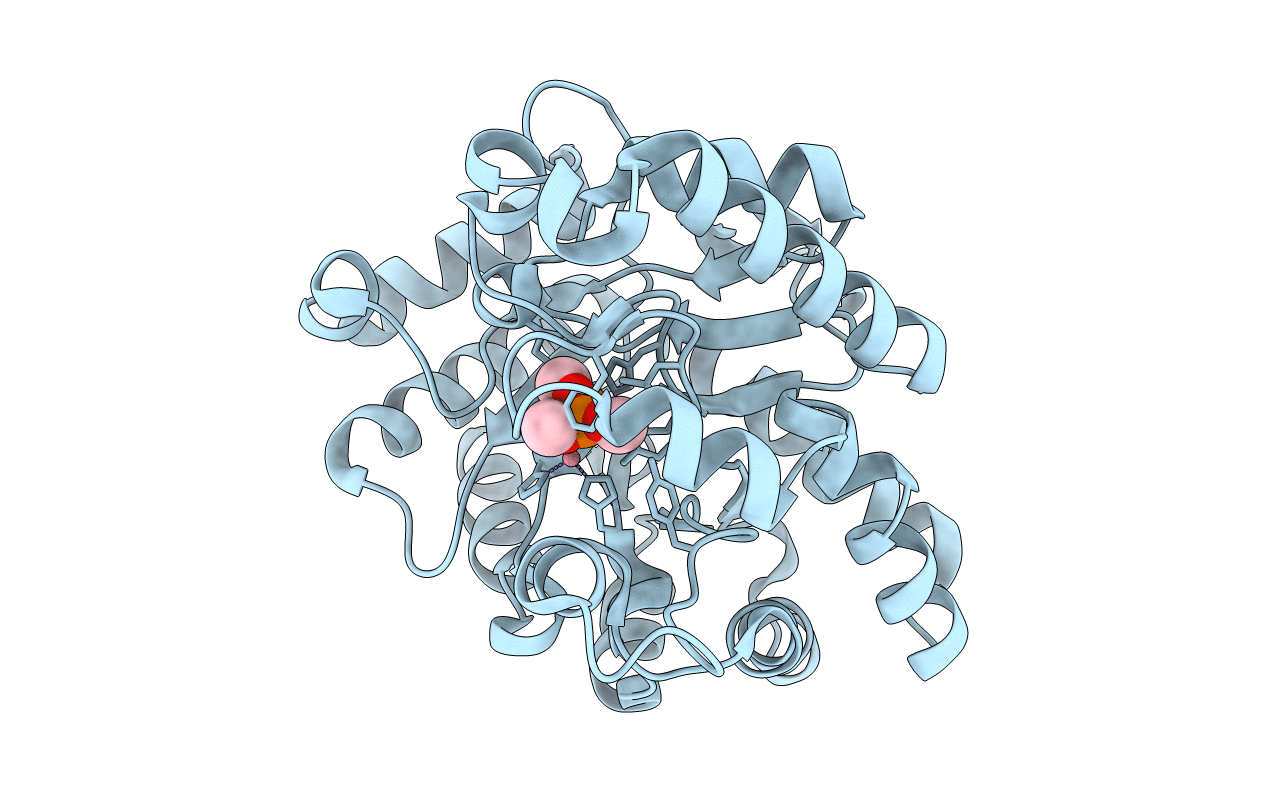
Deposition Date
2005-09-09
Release Date
2005-09-20
Last Version Date
2025-03-26
Entry Detail
PDB ID:
2D2H
Keywords:
Title:
OpdA from Agrobacterium radiobacter with bound inhibitor trimethyl phosphate at 1.8 A resolution
Biological Source:
Source Organism:
Agrobacterium tumefaciens (Taxon ID: 358)
Host Organism:
Method Details:
Experimental Method:
Resolution:
1.80 Å
R-Value Free:
0.21
R-Value Work:
0.18
R-Value Observed:
0.18
Space Group:
P 31 2 1


